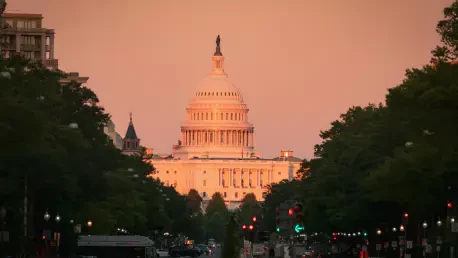In the realm of federal construction undertakings, each presidential administration often introduces policies reflecting its economic vision and workforce priorities. One such policy under scrutiny is the executive order signed by President Biden in 2022, which reshaped the landscape of federal contracts by mandating project labor agreements (PLAs) for substantial federal projects valued above $35 million, prompting contractors to engage with unionized labor forces. This move aims to streamline negotiations and ensure fair workforce practices, contrasting significantly with the prior administration’s stance, which leaned towards deregulating such requirements.
Legal Challenges and Interpretations
Trump Administration’s Exemptions
The path that led to the legal dispute over PLAs was paved during the Trump era, when two memos were issued to carve out exemptions for the Defense Department and projects managed by the General Services Administration (GSA). The essence of these exemptions rested on bypassing PLA requirements for key federal projects, particularly those entrenched in national security or critical infrastructure. However, this administrative maneuver faced a robust challenge, as unions perceived it as bypassing the fundamental intent of Biden’s executive order.
The conflict came to a head when North America’s Building Trades Unions decided to contest these exemptions through legal channels. They filed a lawsuit contending that the exemptions flouted the Administrative Procedure Act and contradicted the executive order’s explicit directions. Given the politically charged backdrop and the intricate web of administrative procedures involved, this legal dispute attracted significant attention, casting a spotlight on how executive directives are operationalized or circumvented by subsequent administrations.
Judicial Response and Rationale
Upon review, U.S. District Judge Rudolph Contreras intervened with a pivotal ruling. His decision underscored that the exemptions contravened both the spirit and letter of the executive order by sidestepping the mandated case-by-case analysis. Contreras emphasized the importance of individualized exceptions, which the Trump-era memos neglected, opting instead for blanket deviations without requisite justifications. By issuing a preliminary injunction, the judge effectively invalidated these memos, thereby reasserting the primacy of Biden’s PLA mandate.
This judicial stance not only preserved the continuity of the current administration’s labor policy but also set a precedent emphasizing adherence to administrative processes and individualized assessments. Through this ruling, the judiciary reaffirmed its role in checking administrative actions that deviate from established executive policies without due procedural diligence. As a result, federal contractors now find themselves bound to Biden’s PLA requirements unless future modifications are authorized through legitimate legal channels.
Industry and Political Implications
Impact on Federal Projects
For federal contractors and the broader construction industry, this legal ruling bears significant implications. By maintaining Biden’s original PLA requirement, the ruling necessitates that contractors on federal projects exceeding $35 million engage in negotiations with unions, affecting both workforce dynamics and project timelines. For many contractors, this shift necessitates adjustments in project planning and labor management, requiring strategic collaboration with union representatives. The ruling underscores the administration’s commitment to fostering a unionized workforce, and thus, projects must adapt accordingly to comply with this regulatory framework.
Contractors must now navigate the intricacies of union negotiations and comply with collective bargaining agreements, which could potentially impact cost structures and timelines. While some industry stakeholders fear the possibility of increased expenses and project delays, others contend that structured labor agreements foster clearer expectations and mitigate the risks of labor disputes.
Broader Political Ramifications
The decision not to appeal the injunction by the Trump administration conveys broader political ramifications beyond immediate policy outcomes. By reinforcing the authority of an executive order, the judicial ruling highlights the inherent complexity and continuity challenges within American administrative governance. It illuminates the ongoing interplay between successive administrations and reflects the judiciary’s crucial role in upholding legal standards against unchecked policy deviations.
Moreover, this legal affirmation of the executive order may set the stage for future dialogues regarding the parameters of presidential directives and the extent of permissible administrative flexibilities. As contractors and political parties digest the implications of this development, the case serves as a reminder of the strategic importance of legally grounded policy implementations and may influence forthcoming debates on labor and economic policies.
Navigating the Future
In the arena of federal construction projects, each presidential administration frequently crafts policies shaped by its economic agenda and workforce priorities. An illustrative example is President Biden’s executive order issued in 2022, which significantly altered the federal contracting space. This directive mandated the use of Project Labor Agreements (PLAs) for large-scale federal construction endeavors exceeding $35 million in value. The aim was to ensure contractors engaged unionized labor forces, facilitating smoother negotiations and fostering equitable employment practices across these projects. This initiative sharply contrasted with the approach of the preceding administration, which favored a more deregulatory stance, offering contractors greater leeway in bypassing similar labor requirements. By championing PLAs, the Biden administration spotlighted its commitment to re-elevating organized labor within the framework of government contracts, a move intended to align federal projects with sustainable workforce practices while navigating political and economic complexities.









